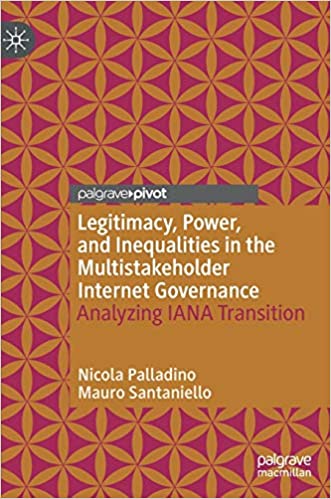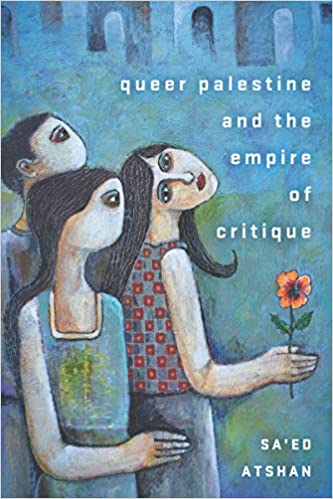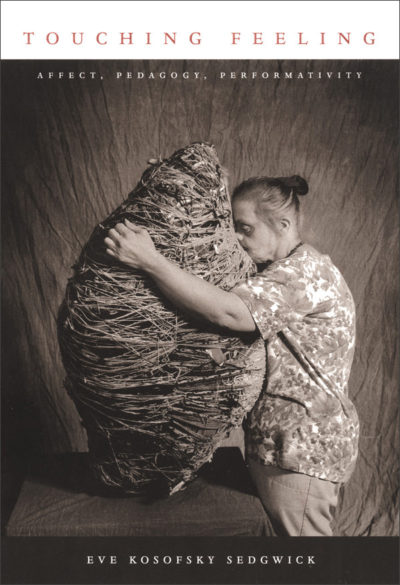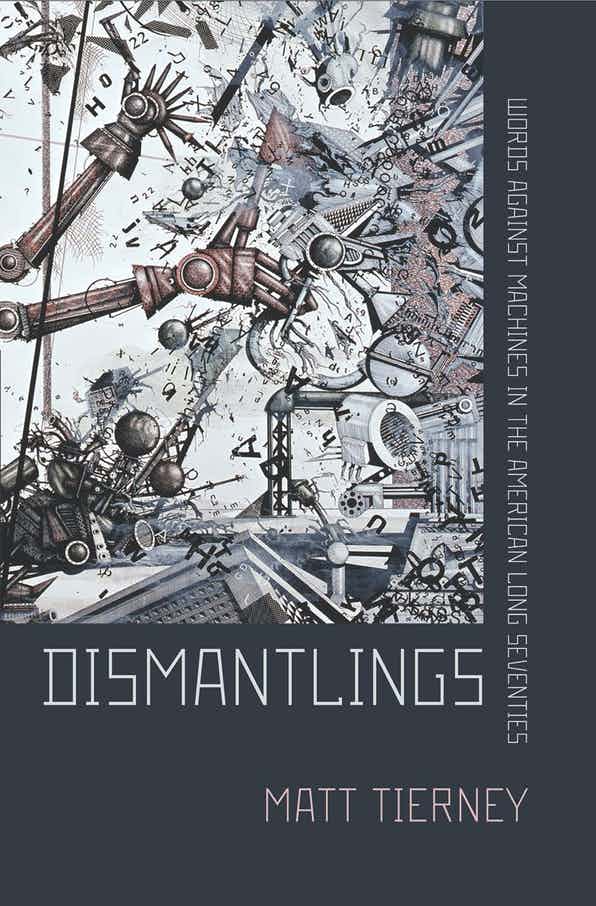This review has been peer-reviewed by the b2o editorial board.
Review of Alex Zamalin, Black Utopia: The History of an Idea from Black Nationalism to Afrofuturism (New York: Columbia University Press, 2018)
by Linette Park
Split between the injuries of the past and the possibilities of the future, black political thought has always emerged from inequalities of power that avow a property of suffering. Whether this suffering is conceived in relation to the systematic and repressive forces of the nation-state that fortify structural inequality, or in relation to the limits of the reason and laws of the state, the split between the terms of the past and the contours of the future has led black political thought to scrutinize the ineffable conditions that allow black suffering in the name of the political. The notion of the political has held up well, presenting a mirage of politics that hinges on a structure of anti-blackness. This structure of anti-blackness is most sharply indexed by the unprecedented intensification of black murder at the hands of law enforcement and the growing carceral archipelago in the United States and globally.
On this score, the property and conditions of black suffering in the United States in relation to Western political thought have rightly, in the words of Saidiya Hartman and Frank B. Wilderson III, remained fundamentally unthought.[i] Black suffering, in other words, remains absent in the theorization of the political in spite of the monumental history of racial slavery’s violence, which gives rise to the political, social, and economic orders of modernity in the Americas and the relations that conceive them. More simply put, such an absence constitutes and sustains the relation between political thought and possibility. In the face of deep-seated insecurities (and an even deeper and axiomatic incommensurability of anti-blackness in Western political thought), Black Studies, to this ever unfolding (and enfolding) split, has engaged with questions of the imagination, freedom and rights, sovereignty, and matter(ing) of black life. In this broadest sense, black political thought—whether it be formulated via Afro-pessimism, Black optimism, or Afro-futurism or by taking up their internal theoretical differentiations—is necessarily critical of the political and the conditioning of thought that avers the plural and intersubjective character of political formations all whilst excluding the question of blackness. Positing these varying movements of thought just now is not to say that they are all one and the same. For, indeed, the debates at the fore of Black Studies—the political movements and praxes of black thought—are contiguous in their critiques and take form on different sides of this constellation.[ii] The intellectual history of black political thought binds invention to the ontological question of blackness, which is dispositioned as a disinheritance from civil society.[iii] For slavery always preceded (and inadvertently enabled) “the empty space of power” in which people could lay claim to the possibility and property of the commons.[iv] Within this history, the turn to hope has been figured as probability, object of critique, and course of action with utopia as its horizon.[v]
Alex Zamalin’s Black Utopia: The History of an Idea from Black Nationalism to Afrofuturism is in high pursuit of utopia as a horizon for political thought, with fantasies of its possibilities as its engine. In the book, Zamalin, author and scholar of several books on political thought and African American freedom struggle in the US, confronts the split between past injuries and future possibilities. At the outset of the book, he writes:
Utopia’s landscapes are unfamiliar because they bring into life familiar fantasies. Utopia is like religion not because of the dogmatic theology or secular truths it postulates, but because it conjures powerful, irrepressible, sometimes ecstatic feelings: of salvation, of being at home in the world, and of reconciliation with strife. For this reason, utopia is as fruitful a site from which to test the value of our extant political formulations as it is a horizon toward which we might look to improve our lives (6).
Zamalin premises Black Utopia on this feeling of hope driven by the familiarity of fantasy through which, accordingly, a transcendent culture and politics emerge in spite of the subjugation of black life in the long and present history of enslavement and imprisonment. Alluding to the iconography of Frederick Douglass, Sojourner Truth, and Martin Luther King Jr., Zamalin is the first to point out that such a trajectory of hope and utopia has been evident in African American political thought, yet nonetheless he puts forth the concept of utopia as the neglected site in the American cultural and political imagination. For Zamalin, something is lost in contemporary American political thought—and utopia, as conceived in Black Utopia, is able to retrieve this loss while also advancing its way forward in the African American political and literary tradition and its praxis. In this schema, however, one might argue that black utopia can only spring from a recuperative gesture which has been internal and external to, which is also to say that it does not depart different from, the liberal repressive mechanisms of the nation-state that perpetuate the structural and systematic exclusion of black life in civil society and politics in the US. Zamalin submits that the methodological approach to the book is not “analytical” but “more concerned with politics” in its excavation of black utopia as an untheorized site for political thought (17). He writes, “Black Utopia’s intellectual ambition is to texture and restore its proper place a neglected site of the black American political and cultural imagination; and it is to offer a critical interpretation of the idea of utopia” (18). Further, Zamalin claims that the goal of the book is “as much to understand the boundaries of the black political and cultural imagination as it is to see what lessons it has for contemporary political life. It is to assess which elements of black utopian and antiutopian thought ought to be reclaimed or abandoned” (18, emphasis added).
Zamalin’s invitation to center the black American political and cultural thought to the center is admirable and reflects his own sustained commitment to the multiplicity within African American literary and political traditions over the years. Yet, because Zamalin separates the “analytical” from “the political”—the structural from the theoretical field and the terms within it which mark an absence and assume the demand to be reclaimed or abandoned—utopia, too, becomes both an ambiguous yet ostensibly malleable concept for Zamalin that allows for a recuperative reading of and for politics. With this, both black utopic and dystopic thought—which appear interchangeable at times in the book—and the boundaries of their imagination, gesture to a politics and ethics that have yet to be realized in the political present but, nonetheless, can be retrieved from black utopic thought. Hope becomes the operative tour de force to acquiesce an (un)imagined and unattained politics that has yet to arrive. But what remains unclear: if “utopia” is as fungible as it is imagined to be restorative for politics, why black utopic and dystopic thought? Why not simply black thought as a meditation on the movement of thinking and imagination that remains veiled in the common political and theoretical fields and in what is proper to politics?
To posit the landscapes of utopia as “unfamiliar,” given their capacity to “bring into life familiar fantasies,” Zamalin designates a particular model of politics and an intrusive mode of enjoyment (disguised as fantasy) as the decisive representations of hope. I would argue, however, that the question as concerns black political thought—what and how it may throw light on contemporary political life—lies not in the exceptional space of fantasy, but rather in the exceptional place in fantasy where the most burdened and buried components of the imaginary reside and are illicit from the conditions of hope. To centralize the space of fantasy as the possible site of liberation for and of black politics sets up a mechanism through which a politics can be reclaimed over and over again while eliding the ethical and structural problematic of how blackness occupies a position in the American psyche and has yet to be truly liberated. This reclaiming is neither politics nor political, but is an insistence on a method of finding a representative of black political thought that represses the originality of a resistance within that which is unnamable in the symbolic practices and politics of culture.[vi] What underlies Zamalin’s book is a structural problematic: how is the imagination of the free black in a post-emancipation context conceived and re-inscribed through language at the level of imagination and collective fantasy? In other words, whose fantasy of utopia is this and whom is it for? The reinscription of the black imagination as a politics—full stop—and the reading of that imagination as reducible to fantasy would seem to disavow the privilege in reading and rewriting the other’s dreams of freedom as an emancipatory world. This might be evident in Zamalin’s use of the phrase “utopia in black” as interchangeable with “black utopia” throughout the book.[vii] Indeed, the book never articulates this important distinction between whose fantasy it is and who is subject to it. Such a distinction would not only provide a reorientation that gives view to a horizon of utopia undercut and projected by an imagined “we,” but it also would signal more explicitly how the configurations of fantasy at the expense of blackness authorize the subjects of political thought—utopic or otherwise.
Zamalin’s Black Utopia ambitiously draws an intellectual and literary history of utopia and dystopia in African American cultural production, focusing on particular works by Martin Delany, W.E.B. Du Bois, George Schuyler, Richard Wright, Sun Ra, Samuel Delaney, Octavia Butler, and others. Reading this set of texts symptomatically as a restaging of the drama of and for hope, Zamalin attempts to substantiate his claim that the utopic image of hope offers a vision of “untapped possibilities already embedded within society—unconditional freedom, equality, interracial intimacy, solidarity, and social democracy” (10). These symptomatic readings perform a structure of “affirming the affirmation…of utopia,”[viii] and in doing so, they bypass the question of how these very terms—freedom, equality, interracial intimacy, solidarity, democracy—scaffold the illusions of political promise without interrogating the grammar of the political itself or the radical site of difference in which black aesthetics has been constituted. In this sense, Zamalin’s discussion throughout the book of the sight of black cultural production as an interventional force relies on utopia as a primary conceptual device to marshal the explanatory power of black inequality in the history of politics and the societal makeup of anti-blackness. Utopia is a placeholder; conceptually, as Zamalin figures it, it functions to suspend the struggle that calls it forth as a space.
Zamalin traces the utopic characteristics of the “black radical imagination”—a concept he positions in conversation with major African American scholars, notably Robin D.G. Kelley, author of Freedom Dreams: The Black Radical Imagination, and Cedric Robinson, author of Black Marxism: The Making of the Black Radical Tradition—through a selection of African American texts. While he acknowledges in his footnotes the contributions made by scholars such as Kelley and Robinson to the history of black radicalism, he ultimately claims that his exploration departs from this history, in which Kelley and Robinson “consider the links between class and race.” Instead, Black Utopia intends to focus on a “vision of utopia within black communities” that is “left open-ended and not specified” in the vein of Marx (148). Following this view, Zamalin’s “utopia in black” might be better understood as appropriating utopia with and within representations of blackness and as pursuing a selective reading of German idealism and French philosophy. This gesture contains a contradiction that undergirds Zamalin’s desire for visions of black utopic thought “on its own terms” that could also be productive for Western political thought. While for Zamalin the ostensibly utopic (and dystopic) ruptures signal a teleology for theorizing the political, black political thinkers and black feminists have long asked about the very viability of a teleological turn which, in turn, has reflected on the conditions and terms that a black radical tradition may signify.[ix]
Let us turn to his reading of Martin Robison Delany, which commences the book. For Zamalin, Delany, an African American abolitionist and emigrationist, is emblematic of “[extending] to black citizens a vision missing from the nineteenth-century utopian communitarian energy being spread throughout the United States” (21). Accordingly, Zamalin writes about Delany: “his work imagined what history couldn’t: black liberation on black terms” allowing for “Black escape to a new world was the first idea of black utopia” (21). Centralizing Delany’s fictional work, Blake; or the Huts of America (1859), rather than his previous substantive work, The Condition, Elevation, Emigration, and Destiny of the Colored People of the United States (1852), Zamalin takes great interest in the ways in which Delany offers “a story” about race, interracial intimacy, black citizenship, and sovereignty at the height of the long nineteenth century. With Delany’s fiction, “race became a story that required a beginning, middle, and end” (31). While, as Zamalin makes clear, the often contradictory views on race and politics staged by Delany set up an uneven gender politics, Zamalin distinguishes Delany as “nonetheless [providing] the very architecture for how to articulate a radical black imagination beyond the possible and to defend black utopia” (33). Even across contradictions, Zamalin maintains that Delany’s politics were utopic, turning “blackness into a force for resistance against arbitrary power” (25). As Zamalin writes, “Delany found equality, dignity, and freedom in black lives. He said no to white supremacy, exposed the drama of political contingency, and told of power’s vulnerability. This was the vision Delany modeled to inspire resistance to reach black utopia abroad. But it wasn’t extended to a defense of gender equality, popular rule, and economic freedom” (33). The utopic imperative here rests on the disavowal of a racialized gendered politics in several aspects: escape (into an imagined and pure homeland), what Zamalin describes as sovereign mind, and interracial desire—all read through the genre of fiction or story. These aspects are not fully interrogated yet are industrialized under and for the banner of utopia and this raises the question: can or is a politics, (or aesthetics) of utopia be compromised in relation to other registers of difference? This question returns us implicitly to our previous one: who is this fantasy for and who is authorizing this fantasy? If the above are the objects of politics—escape to a pure homeland of Africa, sovereignty, interracial intimacy—why have these dimensions been legislated as prohibitions in the first instance and cast off as forbidden pleasures of freedom? This question echoes the problem of the relation between law and the renunciation of black desire theorized by David Marriott: “It is because [blackness] is deprived of being and forced to renounce desire that the black experiences the whiteness of the law in terms of what both allows and commands his rebellious servility.”[x] The inextricable relation between the whiteness of law and the renunciation of black desire that Marriott identifies raises questions about how to consider black self-governance in a utopia that has yet to come. For Zamalin, the illusion of utopia that has yet to arrive requires politics to have a narrative arc that assumes racial self-governance as its vitalization or at the very least a form of agency. That said, a story of race that requires a teleology and an order to politics underscores precisely how black agency and desire are veiled and subordinated by the whiteness of law and its vision of race. Put otherwise, the story of race—the one “with a beginning, middle, and end”— reproduces the prohibition of black desire that Zamalin believes to be unveiled through utopia. The separation of issues of gender and sexuality from race, and the idea that they can be compromised in and for a utopic vision underscores the negation of black desire in this schema.
In my reading of Zamalin, interracial relationships return as an object of politics and thus are the consolation of a pure politics of desire and a pure desire of politics—a perverse representation of how desire has been desexualized and deracialized in its articulation.[xi] In the third chapter, “W.E.B. Du Bois’s World of Utopian Intimacy,” Zamalin pursues the idea of interracial relationships further in his idea of a harmonious society of relationships. Following an attempt to recuperate a black feminist politics in the previous chapter, Zamalin finds promise in the respective visions of “an unknown postracist community” in Du Bois’s “The Comet,” Darkwater, and Dark Princess (53). According to Zamalin, Du Bois’s depictions of a postracist society stem from his ability to reverse practices such as dominant forms of knowledge production, namely that which finds value in scientific notions of racial hierarchy. However, Zamalin does not consider here the ways in which Du Bois explicitly questions race as a teleological concept in the making of the modern subject. In construing Du Bois’s own narrativization as a “postracist ethics,” Zamalin misses the nuance of Du Bois’s reformulation of narrative, which, as Nahum Chandler argues, provides a necessary and critical “desedimentation” of a “privileged orientation toward the very texts and historiographical subjects that are themselves the products of social hegemony.”[xii] Instead, Zamalin finds a “postracist ethics” in Du Bois’s fictionalization of another world wherein there is a future of possibility outside of normative constructions that deem interracial intimacy as socially and morally objectionable. After attempting to translate Du Bois to critics who characterized his work as racial essentialism, Zamalin peculiarly endeavors to advance his claims of a “postracist ethics” by describing Du Bois’s approach to “[dismantling] knowledge based on utopian scientific rationality, that everything could be measured, known, tested, fully understood.” He writes about Du Bois: “Values instead came from the failure to fully recognize social meaning and, instead, a sensitivity to human expressiveness—the different gestures, tones of voice, and textures of speech—that provides cues for responding to an engaging with the person who appears before them” (53). Zamalin’s project of finding value in human expressiveness rather than questioning the signs of race that culture and politics prescribe, sets up in Du Bois’s work a utopian intimacy wherein “the suffering, pain, violence, and marginalization associated with ‘darkness’ are as apparent as the light—the reflection of beauty and resilience in the ocean of a reimagined blackness” (61, emphasis added). And yet, within this reflection, Zamalin cannot see how he mirrors a necessary reimagining of race that reinscribes the very problem at the heart of Du Bois’s work, the “problem of the color-line,” organized “around an axis of denial… with regard to the ensemble of practices and concept-metaphors organized around the sign of race.”[xiii] Chandler stresses this in his rigorous theoretical and archival account of Du Bois’s oeuvre, that “from the turn to the twentieth century Du Bois had already offered a narrativization of the formation of a new organization of hierarchy, a new global order, as ‘the problem’ of that century.”[xiv] The distinction between the concept of race and what organizes that concept is critical to understanding the remaining problem of the color-line.
For the achievement of utopian intimacy and postracial ethics then, one must shed both sexuality and race from the very nature of difference—an onto-political rupture in and of itself. To be clear, this exfoliation engenders a postracial politics premised on barring the intermingling of sexuality and race. Zamalin’s suspension of the ontological via this separation allows for the reimagining not only of a harmonious society but of blackness as something other than one’s own being. Zamalin does not explore these ontological distinctions, or the debates raised within Black Studies about the status of blackness and being. Rather, he moves away from the problematization of what constitutes racial distinction at a crucial point in his argument in order to imagine the parameters of a new ethics. In this move, he elides the issues of deracination and the tendency of blackness to be exploited by politics and the political. And while Zamalin’s objectives may not concern the current debates around ontology and blackness, Black Utopia’s endeavors to conceptualize the current status and state of the field of black political thought would benefit from these discussions that emphasize that blackness can neither be reduced to identity nor politics. That is to say, these critical discussions signal that blackness is more than identity and politics and elicits an inhabitation for political thought in its multiplicity and without term.[xv]
In Black Utopia, the most utopic form of intimacy is imagined to coalesce around an antagonism between race and sexuality rather than to seek out the incommensurable conflict between anti-blackness and civil society, which projects a necessary segregation between differences (of race, gender, and sexuality). Zamalin reimagines blackness in the light of the “darkness,” failing to see the violence that accompanies segregating a miscegenation of desire. In doing so, he unwittingly allows for the disposability of blackness itself, along with the queering of gender and sexuality, and stages (white) desire in an even more particular (hetero)normative way. Utopic intimacy performs a transgression against the myth of interracial desire: it makes representable the becoming and intermingling of race and sexuality, but only in principle by emptying the radical difference of blackness and sexuality from their uncertainty rather than by addressing their existing entwinement in identity, culture, and society. As Jared Sexton writes, “racism is not an obstacle to interracial intimacy but its condition of possibility.”[xvi] Following Sexton’s argument, we can then also assume that the post- in postracial inhabits a curious and cruel arrangement of temporality and historicity wherein utopia must necessarily bracket blackness as something other than being. Utopia is therefore forced to follow an identity politics of multiracialism, imprisoning itself within the language and signs produced synonymously with a utopic politics.
It is not surprising that Zamalin cannot see this dialectical imprisonment between blackness and the signs of culture in his reading of Richard Wright’s formidable work, Black Power. In this chapter, Zamalin makes utopia interchangeable with dystopia while leveraging the utopic/dystopic as a way of reading the possibilities for black social and political life. The irony to this approach is strikingly clear in his misuse of the word “unconscious” to describe Wright’s engagement with Ghanaian citizens, culture, and political life during his visit to Africa. Zamalin writes, “Wright lost sight of the way Black Power was itself an unconscious catalogue. It was something of a waking daydream, of how to accomplish this differently in a way that created a postcolonial society unmoored from the political theory of Western colonialism” (83, emphasis added). He goes on: “Dreams, for (Wright), were the apolitical ream of fantasy, immaturity, and unconscious desire. Reality, in contrast, was that of strategy, rule and government. But this very opposition was betrayed by Wright’s unconscious investment in psychoanalysis” (84, emphasis added). Throughout the chapter, Zamalin positions Wright as if without the self-awareness to realize his “American” views eclipsed the ways in which traditional political art was celebrated in the Gold Coast’s revolutionary movement for independence. As a result, Zamalin argues that Wright “mistakenly denigrat[ed] the nonrational elements of traditional culture” and therefore “couldn’t appreciate the way its symbolism contained a philosophy that challenged the orthodoxy of Western systems that promoted inequality” (92). Ultimately, this is what leads Wright, according to Zamalin, to develop his anti-utopian critique in Black Power. But who is performing their unconscious? Could it be that the unconscious cataloguing that Zamalin reads in Wright’s own meditation—which one might also call a conscious study of the way in which censorship, political desire, and blackness intersect—is his own racial anxiety and guilt for a more African black than a black African American? Could this be why Zamalin finds that Wright cannot supposedly see the utopic transcendence in traditional Ghanaian song and dance? Is it this idea of blackness that Zamalin refers to in the introduction when he writes utopia in black?
Nearly twenty years before Zamalin’s reflections on Wright’s Black Power, David Marriott wrote about the importance of Wright’s meditations on the Gold Coast in his path-breaking book, On Black Men, a reference that is surprisingly absent given Zamalin’s assessment that Black Power has been left more or less unexplored.[xvii] Marriott’s elaborations on Wright’s Black Power are, in fact, short, but serve as a compelling and incisive provocation to questions of political thought, dreams, and blackness, implicitly returning us to the function of the unconscious in the projection of utopia or hope. Marriott begins with a scene in which Wright reflects on a projection of blackness that is always already thrown in an alienating crisis of one’s identity and psychic life in public: the cinema. Explaining a scene in which Wright attends a movie house in northwestern Africa, Marriott writes:
… for Wright the spectacle of African spectators reacting to cinematic images, advertisements and stories throws him into disarray. It is as if Africans are not credulous enough, unable to surrender to the fascination of dream and illusion which cinema (and storytelling) represents. They cannot dream because they cannot project themselves into that trance of relinquishment which true dreaming and true spectatorship warrant. In fact, throughout Black Power, Africa and Africans remain, for Wright, an underdeveloped film negative, a censored dream: ‘Though the African’s whole life was a kind of religious dream, the African scorned the word ‘dream’…. The African takes his religion, which is really a waking dream, for reality, and all other dreams are barred, are taboo.’[xviii]
Marriott importantly highlights Wright’s critical investment and investigation into the world of collective fantasy and takes seriously Wright’s own question about what it means to have one’s (black) dreams barred. In contrast to Zamalin, who perceives Wright to be writing as if in “a waking daydream” (83), Marriott points to how signs of culture produce substitutive images as “waking dreams for reality” for one’s black existence.[xix] The difference is crucial: Zamalin portrays white fantasies of how blacks dream, whereas Marriott underscores Wright’s ongoing observation about how dreams are necessarily always already blackened out of existence—leaving one’s unconscious “to live with hatred as our most intimate possession [to become], then, the truly difficult task of our dreams.”[xx] While Zamalin disavows the projection of his own desires for identification leaving unquestioned how such identifications are not separate from, and in fact work with, the fantasies of culture to typecast how blackness should be, Marriott addresses the relations of culture, image, fantasy, and projection (as it were) structurally untenable. Ultimately, these are the structural political and ethical questions that go unattended in Black Utopia.
Zamalin’s explicit engagements with the notion of Afrofuturism in the remainder of the book do little other than reproduce a teleological narrative of redemption upon which Black Utopia relies heavily. Although Zamalin makes efforts to move away from this point—for example, on Samuel Delany he writes that “the science fiction writer brings into a relief a future that is not driven by the demands of the present, but explodes its commons sense” (112)—an Afrofuturistic utopia remains an eschatological concept, a final destination for black liberation. Zamalin finds this emancipatory politics in the utopic/dystopic depiction of social transformation in the works of Sun Ra, Samuel Delaney, and Octavia Butler. Afrofuturism in these works is linked with postracialism, destabilizing gender binaries, and “taking seriously radical hope in the face of the unknown without messianic deliverance” (140).[xxi] Throughout the book, utopia has been the end point of a destination that has yet to be reached and the future, a vision “from which to rethink the present” (108). In the futures imagined by Ra, Delany, and Butler, “subjecting power to immanent critique would forget a society in which freedom became more of a reality for most. And it would create a world where what seemed fixed became overturned” (113). Here, Zamalin alludes to the structural inequalities coextensive with settler-colonialism, housing crises, as well as trans-, gender, and racial violence addressed by the authors. But assuredly for Zamalin, “Black utopian and antiutopian work chastens contemporary American faith in postracialism—that good intentions and better laws could solve the problem of racism, as if it can be remedied through better civic education or harsher penalties for bad deeds” (140). This faith in postracialism or a postracial moment can only be further secured by “better” law, though there is little reference to the profane system of belief and commandment that composes America’s existing juridical order and cannot be separated from anti-blackness. It is the moralistic undertone and the peculiar (and perverse) pairing of political reform and black futurity with which Black Utopia ends that may leave some readers dissatisfied with the book’s promise to provide serious engagement with black political thought. But if this is the case, it is not because something like Afrofuturism or current questions of black futurity do not engage with the political. Rather, it is because Black Utopia oddly partitions off a vast constellation of black political thought that engages with such questions in its intellectual history and in the very present. In her own brilliant explorations of Sun Ra and Octavia Butler’s work, Kara Keeling elucidates the difficult formulation and double bind from which these works labor to imagine a world outside of the preconditions of anti-blackness. Keeling writes on Sun Ra’s Space Is the Place:
Sun Ra’s solution in Space Is the Place to the violence and humiliation of US race relations is to give Black folks a world they can own. Sun Ra seems unconcerned about the specter of African American and Black complicity in a settler colonial project when he advocates for a spatio-temporal rupture in Black consciousness sparked by his musical vibrations and profound enough to transport Black people to another planet. Afrofuturist narratives that advocate for colonizing another planet raise (and less often consider, and/or offer, speculative strategies and solutions to) the ethico-political issues that have attended anti-Black settler colonial societies.[xxii]
Keeling’s attention to how black world-making opposes the act of (white heteronormative) reproduction can be extended to include its opposition to the specters of anti-blackness that qualify an understanding of the ethical and political conditions that structure the modern world. It is worth concluding that hope for a black future is never simply utopic nor dystopic. An aesthetic of black futurity, of what has yet to be from the world as one knows it, cannot be retrieved simply by way of revolutionary instruction. It is in this way that blackness (re-)invents thought, which, in spite of its uncertainty, its contested meaning, or non-meaning, is political. To conclude with Keeling then: “From within the logics of existing possible worlds and the range of possible trajectories into the future that they currently make perceptible, a Black future looks like no future at all.”[xxiii] Otherwise put, the end is not the beginning.
Linette Park is the Thurgood Marshall Postdoctoral Fellow in the African and African American Studies Program at Dartmouth College. She is currently preparing her first book monograph, At the Edge of Abolition: Violence and Imagination in the History of California Lynch Law, which examines the present day “lynching arrests” by interrogating the historical, political, and psychosocial formations of violence that inextricably bind these arrests to the afterlife of racial slavery, lynching, and segregation in the United States. She has published in Theory and Event, Haunt: Journal of Art, and has forthcoming work in the peer-reviewed journals: Black Scholar: Journal of Black Studies and Research, Souls: A Critical Journal of Black Politics, Culture, and Society, and Political Theology.
[i] See Saidiya Hartman and Frank B. Wilderson III, “The Position of the Unthought.” Qui Parle, vol. 13, no. 2, Spring/ Summer 2003, pp. 183-201.
[ii] At the time of writing this, Black Studies celebrates its fiftieth anniversary. The first Black Studies program was established at San Francisco State University in 1970 due to the relentless labor of students who went on strike and fought for the program and for the formation of Ethnic Studies (1968). This historical fact is important because the set of literary and historical references in the study of hope and utopia (and the study of that study) in Black Utopia is somewhat peculiar and problematic given that utopia has been an object of extensive exploration and critique in Black Studies. See forthcoming special issues in the journals on the fiftieth anniversary of Black Studies, “Inheriting Black Studies” with Souls: A Critical Journal of Black Politics, Culture and Society and “What Was Black Studies?” in Black Scholar: Journal of Black Studies and Research (2020).
[iii] Most notably, perhaps, Frantz Fanon has written on the notion of invention in Black Skin, White Masks, translated by Charles Lam Markmann, London, Pluto Press, 1952. The notion of “invention” has also been powerfully taken up in contemporary scholarship by David Marriott in his book, Whither Fanon?: Studies in the Blackness of Being, Stanford University Press, 2018. I take up the notion of disinheritance and anti-blackness as a structural condition of political life in “Whence Disinheritance Holds: On Ida B. Wells and America’s ‘Unwritten Law,” Souls, forthcoming, 2020.
[iv] See Claude Lefort, Democracy and Political Theory, translated by David Macey, Polity, 1991.
[v] For a compelling critique on the politics of hope, humanism, and the political in relation to blackness, see Calvin Warren’s “Black Nihilism and the Politics of Hope.” CR: The New Centennial Review, vol. 15, no. 1, Spring 2015, pp. 215-248.
[vi] Frank Wilderson, Red, White, and Black: Cinema and the Structure of U.S. Antagonisms, Duke University Press, 2010, p. 57.
[vii] For example, he writes: “Utopia in black became much more critical and infused by a sense of tragedy. It became defined by unfinished conversations, unresolved debates, critical problematics which resisted easy resolution.” He writes immediately thereafter: “In black utopia, a sense of committed struggle in the face of the unknown was coupled with a realistic sense of subversion and collapse” (12).
[viii] See David Marriott’s critique of José Muñoz’s Cruising Utopia: The Then and There of Queer Futurity, “Black Cultural Studies.” This Year’s Work in Critical and Cultural Theory, vol. 19, 2011.
[ix] There are several thinkers on this topic that are explored chiefly in the works of Afro-pessimism. See Frantz Fanon, Black Skin, White Masks; Zakiyyah Iman Jackson, “Losing Manhood: Animality and Plasticity in the (Neo)Slave Narrative.” Qui Parle: Critical Humanities and Social Sciences, vol. 25, no. 1-2, 1 Dec. 2016, pp. 95-136; Jared Sexton, “People-of-Color Blindness: Notes on the Afterlife of Slavery.” Social Text, vol. 28, no. 2, summer 2010; Christina Sharpe, In the Wake: On Blackness and Being. Duke University Press, 2016; Frank Wilderson. Red, White, and Black: Cinema and the Structure of U.S. Antagonism; and Sylvia Wynter, “Unsettling the Coloniality of Being/ Power/ Truth/ Freedom: Towards the Human, After Man, Its Overrepresentation—An Argument,” CR: The New Centennial Review, vol. 3, no. 3, 2003), pp. 257-337. David Scott directly contends with the question of the political and a black radical tradition. He writes: “Similarly, radical is an idea no less complex, no less ambiguous (“radical” as opposed to what?), if also no less important to the story of the modern black subject. But in the constrained aftermaths of the various black nationalisms, black Marxism, the Cold War, and so on, what idea of politics does radical signify or organize? It is not easy to say with any certainty. And finally, what idea of a “tradition” does the idea of a black radical tradition depend upon? Tradition is a term with a complex and contested genealogy. Indeed, some would argue that the tradition does not belong in the same semantic universe as radical, appearing as it does to be the very reverse of subversion or transgression. What relation between past, present, and future does a tradition comprehend?… And yet, curiously, however contested, there seems a persisting demand for some notion of a tradition that is black and radical (implicit or explicit, marginal or central) in organizing the strategies of criticism within the discursive area of black intellectual life, some stubborn grain against which to position our dissent, a recognition perhaps that even in our attempts to disengage from the claims of tradition we are nevertheless oriented by it” (2). See David Scott, “On the Very Idea of a Black Radical Tradition.” Small Axe, vol. 17, no. 1, 2013, pp. 1-6.
[x] David Marriott, Haunted Life: Visual Culture and Black Modernity. Rutgers University Press, 2007, p. 102.
[xi] See Jared Sexton. Amalgamation Schemes: Antiblackness and the Critique of Multiculturalism. University of Minnesota Press, 2008.
[xii] Nahum Chandler. X—The Problem of the Negro as a Problem for Thought. Fordham University Press, 2014, p. 137.
[xiii] Chandler, p. 73.
[xiv] Chandler, p. 133.
[xv] See Jared Sexton. “The Social Life of Social Death: On Afro-Pessimism and Black Optimism.” InTensions Journal, Issue 5, Fall/ Winter 2011, pp. 1-47.
[xvi] Sexton, Amalgamation Schemes, p. 175.
[xvii] On this note, it is also worth exploring Dorothy Stringer’s essay, “Psychology and Black Liberation in Richard Wright’s Black Power (1953),” which explains Wright’s attention to the quotidian violence and economic control of post-colonial rule. Stringer also offers an eloquent assessment on Wright’s use of classical psychoanalytic concepts while also departing from Freudian thought to revise his own notion of black identity. Dorothy Stringer, “Psychology and Black Liberation in Richard Wright’s Black Power (1954).” Journal of Modern Literature. vol. 32, no. 4, Summer 2009, pp. 105-124.
[xviii] David Marriott, On Black Men. Columbia University Press, 2000. p. x.
[xix] Marriott, On Black Men, p. xiii.
[xx] Marriott, On Black Men, p. xv.
[xxi] In contradistinction to Zamalin’s use of the messianic here, Marriott, following Fanon, incisively points out that any liberatory possibility of the future is one that is “radically unwriteable” and that “the revolution, insofar as it always timely in its untimeliness and not just the teleological outcome of what went before, brings neither redemption, nor erasure, but the messianic promise of a new écriture.” See Whither Fanon? p. 25. With this, one could argue that a transformation in the way in which one imagines a black future (or Afrofuturism) is political not because a postracial moment that has yet to arrive delivers a reconciliation with the profound injuries of anti-black racism, but because such a transformation of and from the future presents a “historical awareness of the present as necessarily self-interrupting” unto one’s black being as a radical difference (29).
[xxii] Kara Keeling, Queer Times, Black Futures. New York University Press, 2018, p. 67.
[xxiii] Keeling, p. 67.









